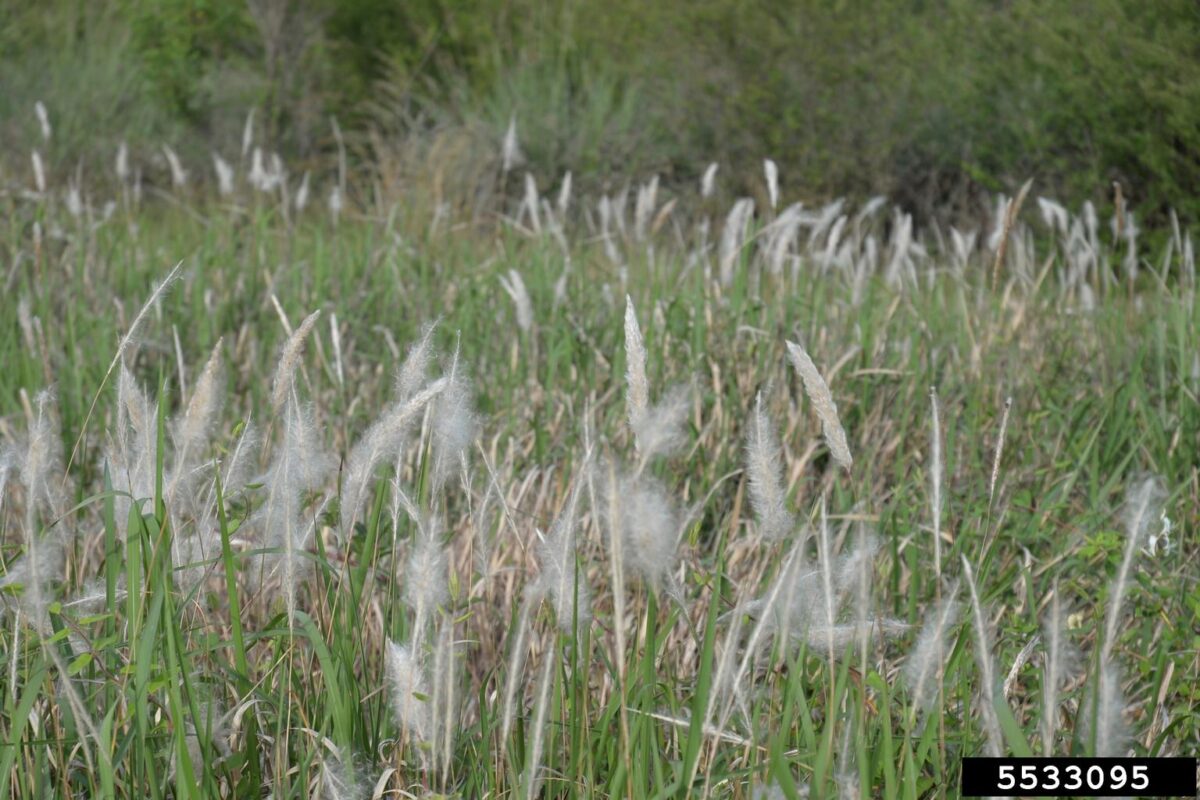Page snapshot: Quick facts about cogongrass (Imperata cylindrica), a globally distributed weed.
Topics covered on this page: What is cogongrass?; How is cogongrass identified?; Where did cogongrass come from?; How does cogongrass spread?; What are the impacts of cogongrass?; How can cogongrass be controlled?; Resources.
Credits: Funded by the National Science Foundation. Any opinions, findings, and conclusions or recommendations expressed in this material are those of the author(s) and do not necessarily reflect the views of the National Science Foundation. Page by Elizabeth J. Hermsen and Naomi Schulberg (2023).
Updates: Page last updated August 8, 2023.
Image above: a field of cogongrass. Photo by Karan A. Rawlins, University of Georgia (Bugwood.org photo number 5533095, licensed under a Creative Commons Attribution-Noncommercial 3.0 License).
What is cogongrass?
Cogongrass (Imperata cylindrica) is a tropical to subtropical grass that has an attractive white, plume-like inflorescence. This grass is considered to be one of the world's top ten worst weeds. In the U.S., the plant is listed federally as a noxious weed. Nevertheless, one cultivar, Japanese blood grass (Imperata cylindrica 'Rubra' or 'Red Baron'), is used as an ornamental plant.
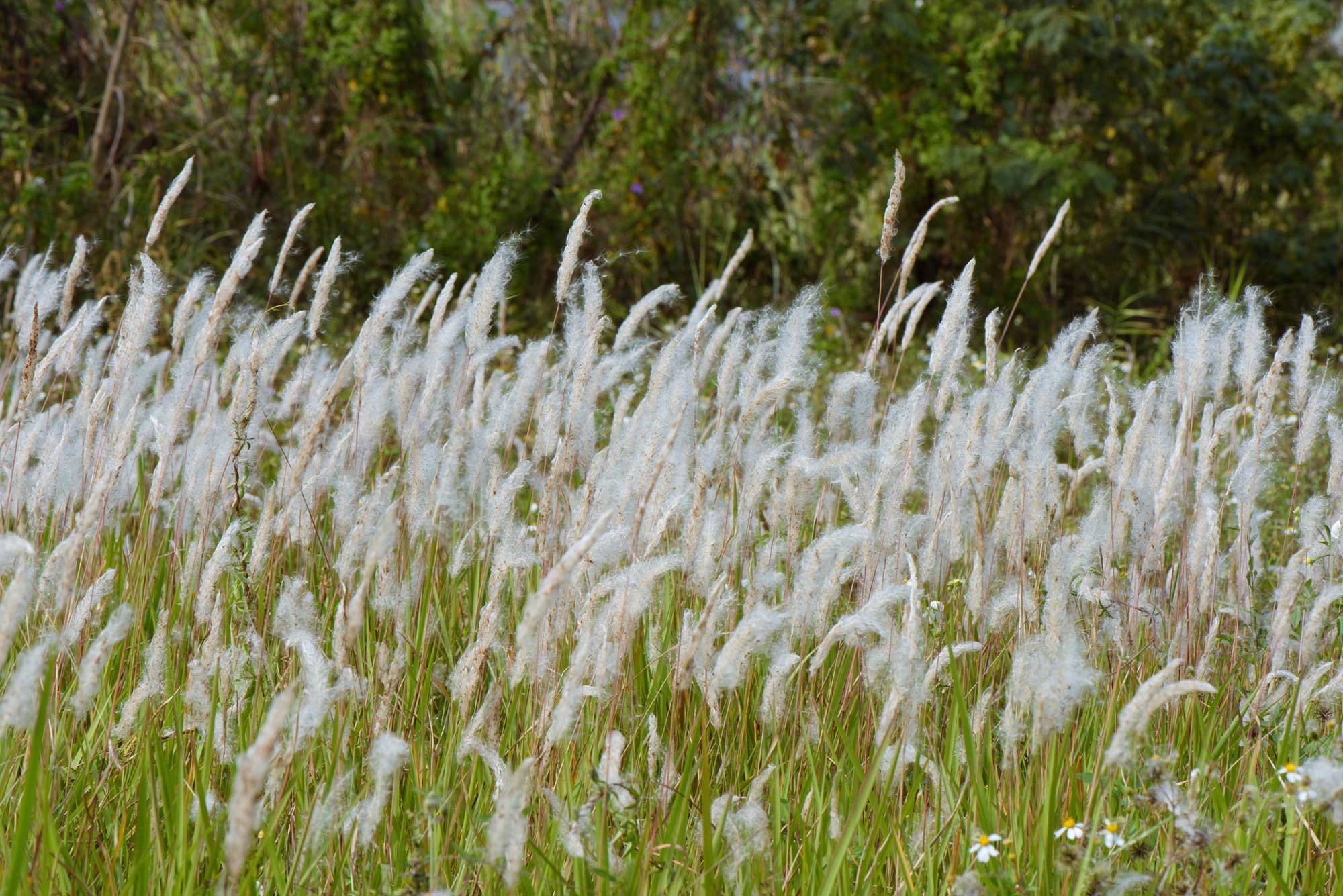
Photograph of cogongrass (Imperata cylindrica) in Taiwan, where it has been introduced. Photo by Cheng-Tao Lin (iNaturalist photo 22887263, Creative Commons Attribution 4.0 International license, image resized).
How is cogongrass identified?
Cogongrass is a perennial plant that spreads via pale and scaly rhizomes. It can reach 1.5 meters (about 5 feet) or more in height. The leaves are yellowish green and have a midvein that is slightly off-center in the leaf blade. The spikelets have conspicuous white hairs, which gives the inflorescences a feathery, plume-like appearance.
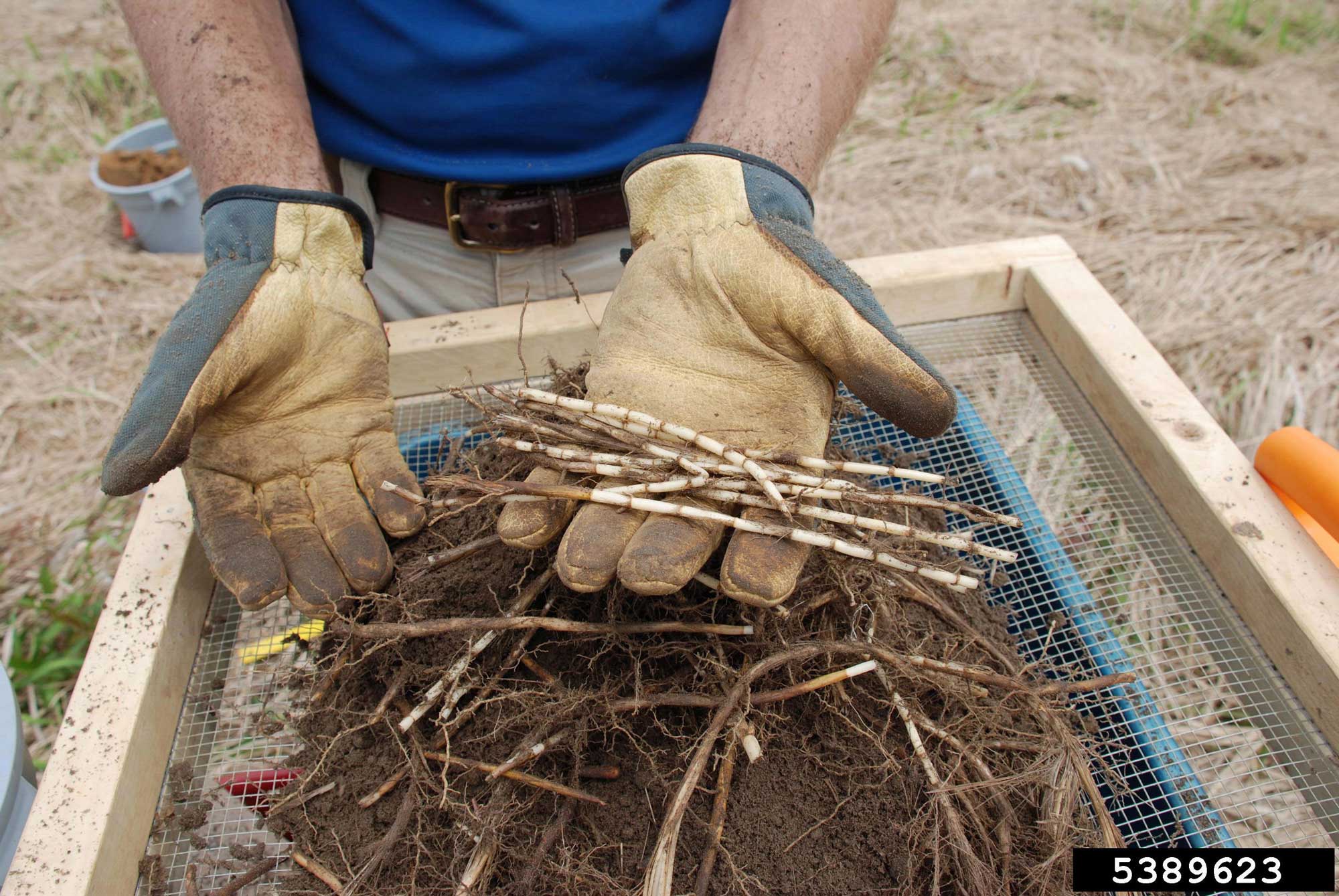
Rhizomes of cogongrass. Photo by Nancy Loewenstein (Bugwood.org photo 5389623, Creative Commons Attribution-NonCommercial 3.0 United States license).
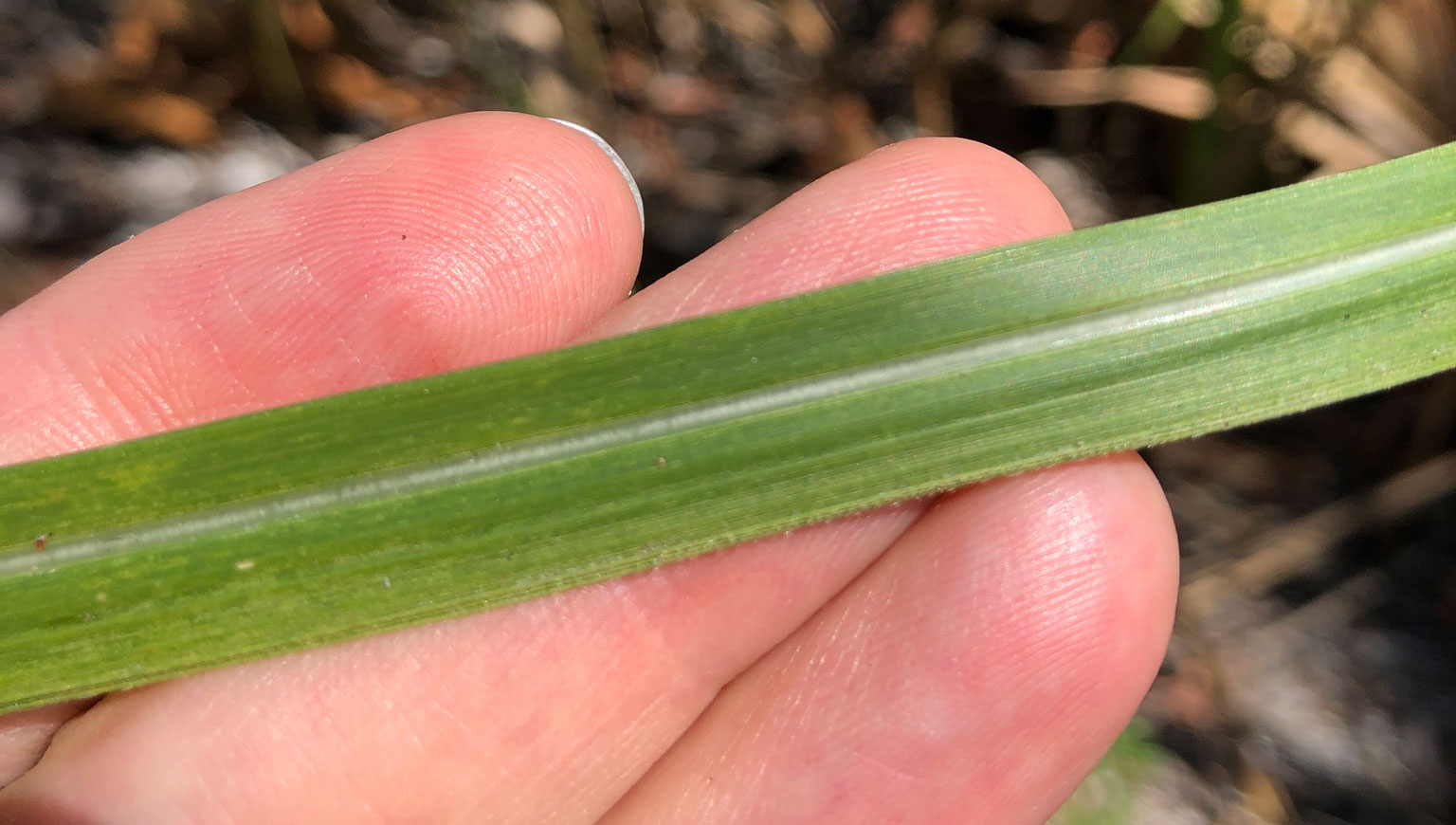
Leaf of cogongrass showing the light-colored, off-center midvein. Photo by elawrey (iNaturalist photo 5009793, Creative Commons Attribution 4.0 International license, image cropped).
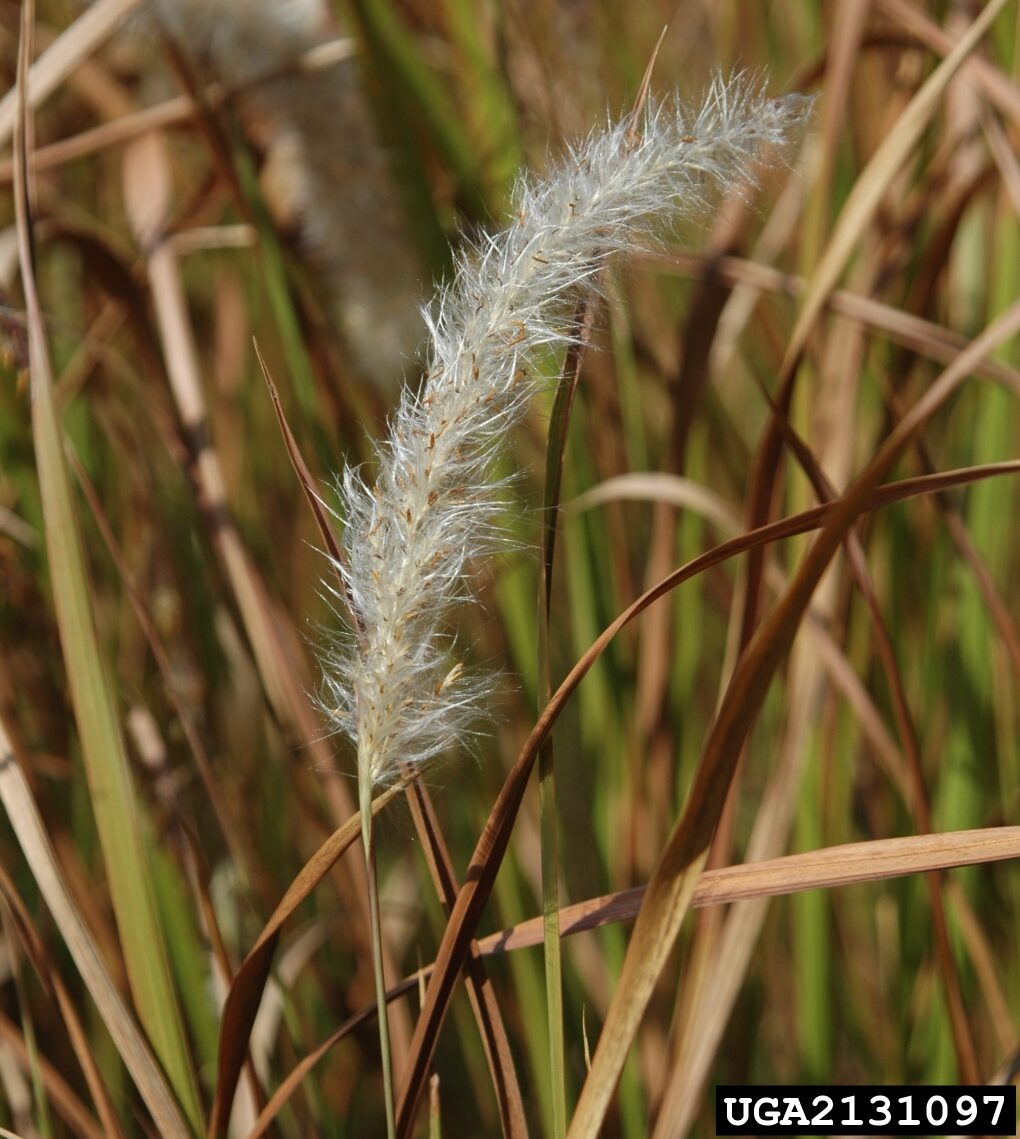
Cogongrass inflorescence with silvery white hairs, giving it a plume-like appearance. Photo by Chris Evans, University of Illinois (Bugwood.org photo number UGA2131097, licensed under a Creative Commons Attribution-Noncommercial 3.0 License, image cropped).
Where did cogongrass come from?
Cogongrass is native to parts of Europe, much of Africa, and southwest Asia. Today, it has spread widely beyond its native range to suitable areas of the Eastern Hemisphere and is distributed from around the Caspian Sea south and east as far as northeast China, the Koreas, and Japan, and south as far as Australia and New Zealand.
In the Americas, cogongrass is currently found in the southeastern U.S. from Virginia to Texas, in Oregon, and in southern and western Mexico. It also grows in Hawai'i. Cogongrass reached the United States in the early 1900s, first unintentionally as packing material and later as a forage grass.
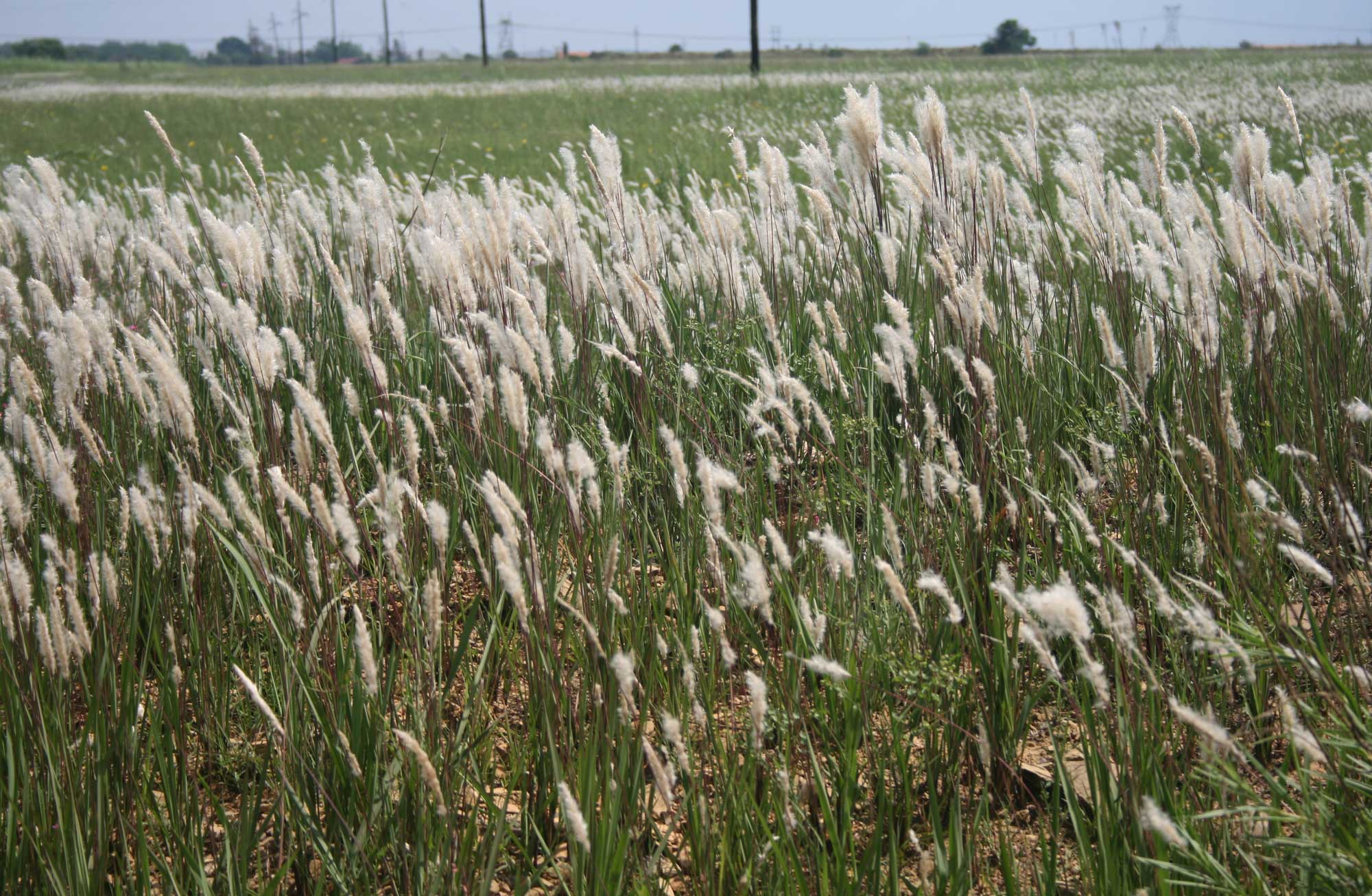
Cogongrass (Imperata cylindrica) in Gauteng, South Africa. Photo by JMK (Wikimedia Commons, Creative Commons Attribution-ShareAlike 4.0 International license, image resized).

Map of states where cogongrass has been reported. Map from EDDMapS. 2023. Early Detection & Distribution Mapping System. The University of Georgia - Center for Invasive Species and Ecosystem Health. Available online at http://www.eddmaps.org/; last accessed August 4, 2023.
How does cogongrass spread?
Cogongrass spreads efficiently via rhizomes (horizontally growing underground stems) and, in some regions, may also reproduce by seed.
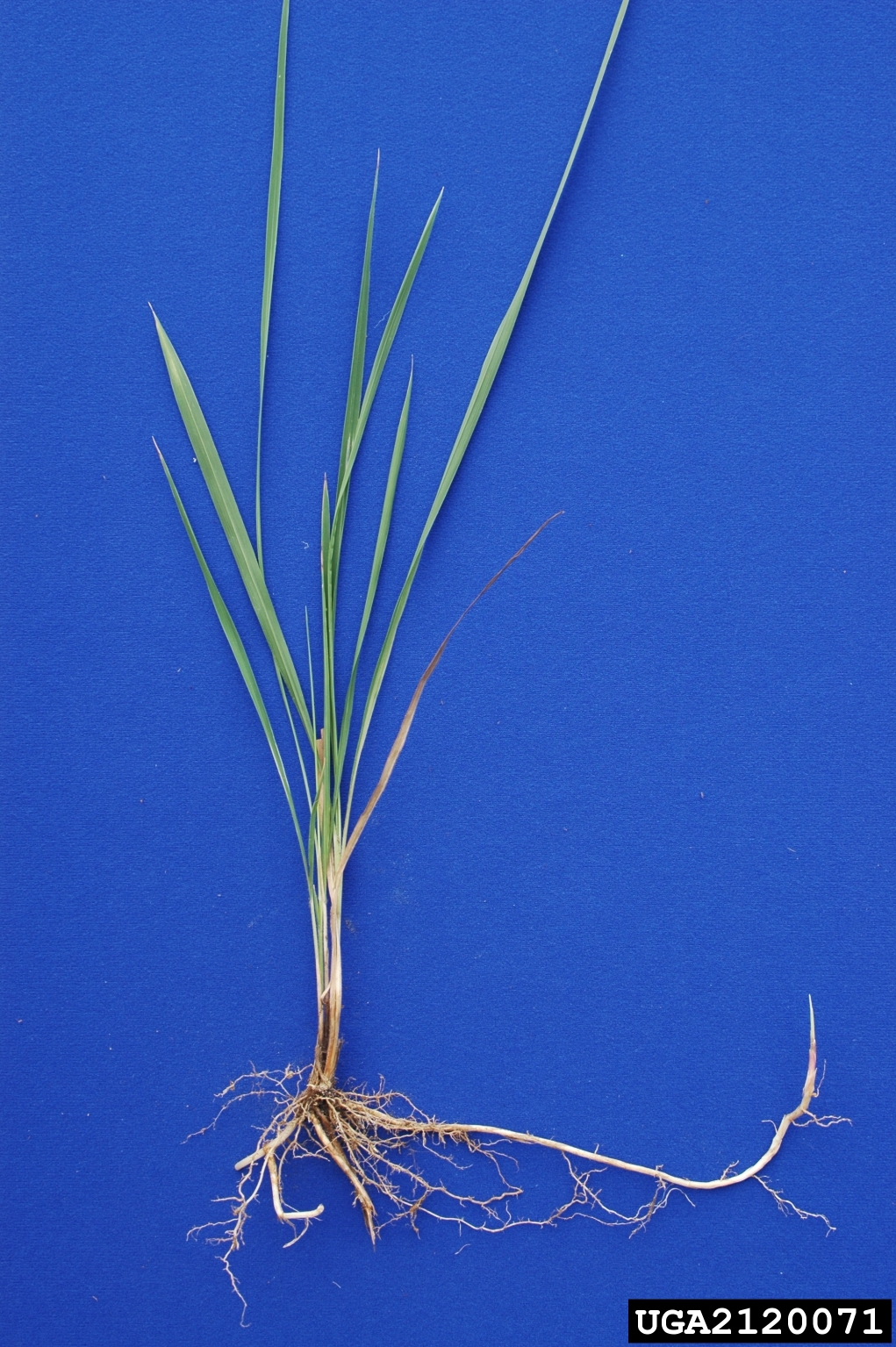
Cogongrass shoot and root systems with rhizomes. Photo by Chris Evans, University of Illinois (Bugwood.org, photo number 2120071, Creative Commons Attribution-Noncommercial 3.0 United States license).
What are the impacts of cogongrass?
Cogongrass is a weed of cultivated fields, disturbed areas (for example, roadsides), and natural areas like forests, wetlands, and savannas. Cogongrass can crowd out other plants to form monocultures (environments dominated by one type of organism) in pastures and wildlands. Cogongrass is fire-adapted and burns at high temperatures. Fire can promote the dominance of cogongrass, and cogongrass infestations can increase the risk of fire in infested areas.
Because cogongrass is a poor forage grass, it is undesirable for grazing livestock. It can also infest cultivated fields, although cogongrass may be easier to manage in cultivated areas than in pastures and wildlands.
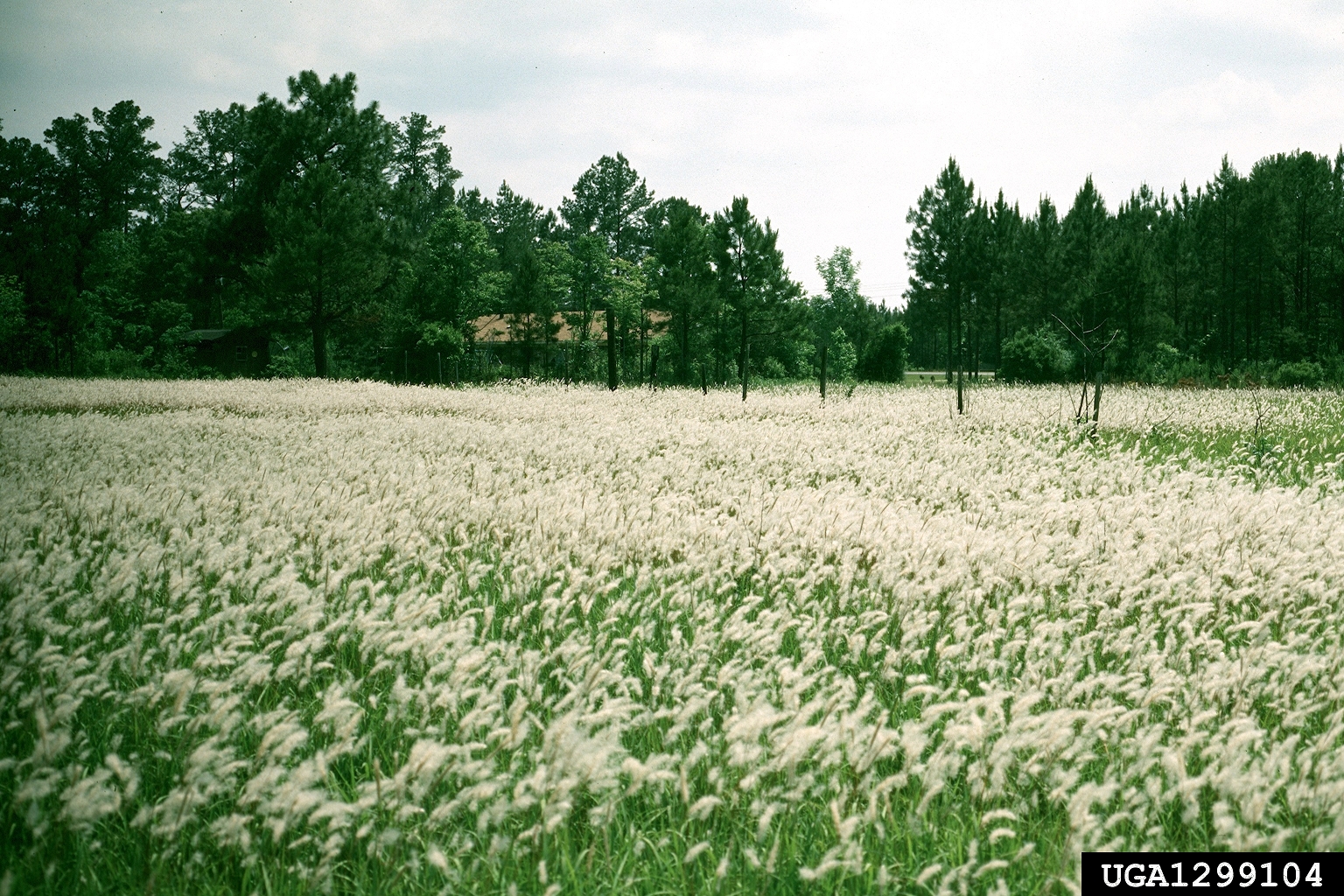
Cogongrass infestation. Photo by John D. Byrd, Mississippi State University (Bugwood.org photo UGA1299104, Creative Commons Attribution 3.0 United States license).
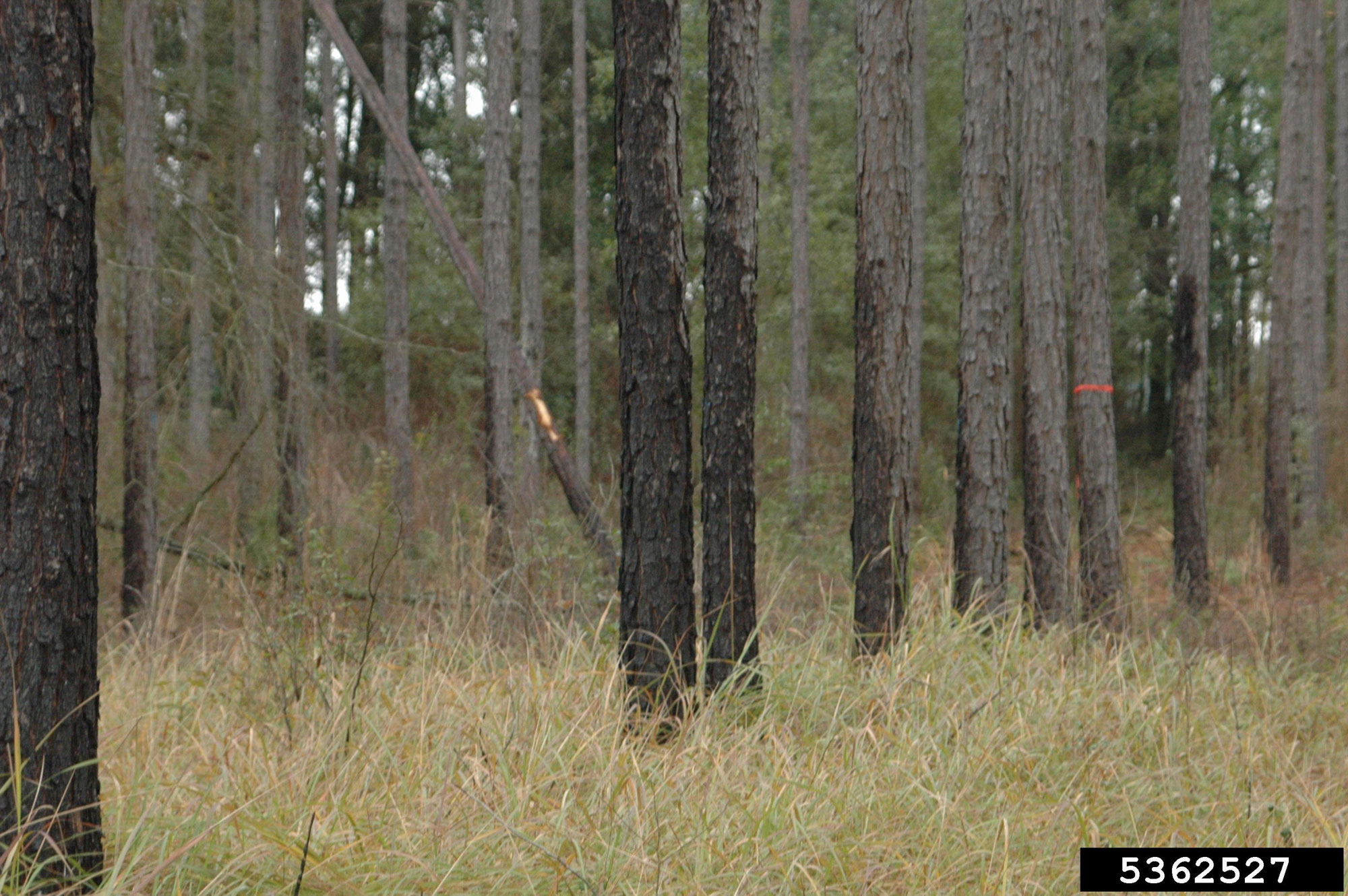
Cogongrass infestation. Original caption: "Burn marks on trees from extreme heat produced by flames fueled by cogongrass." Photo by Carey Minteer, University of Florida (Bugwood.org photo UGA536527, Creative Commons Attribution 3.0 United States license).
How is cogongrass controlled?
No single method can be used to control cogongrass, but methods can be used in tandem to prevent its spread. The age of the grass strongly determines which control methods will be most effective.
Tilling is a good option for younger cogongrass infestations, which have less established rhizome mats. Frequent tillage prevents the re-emergence of cogongrass seedlings.
The use of herbicides is the most common control method. Herbicides containing glyphosate can be used, although repeated use over several years is needed. So far, cogongrass does not appear to have developed resistance to the herbicides that are used to manage it.
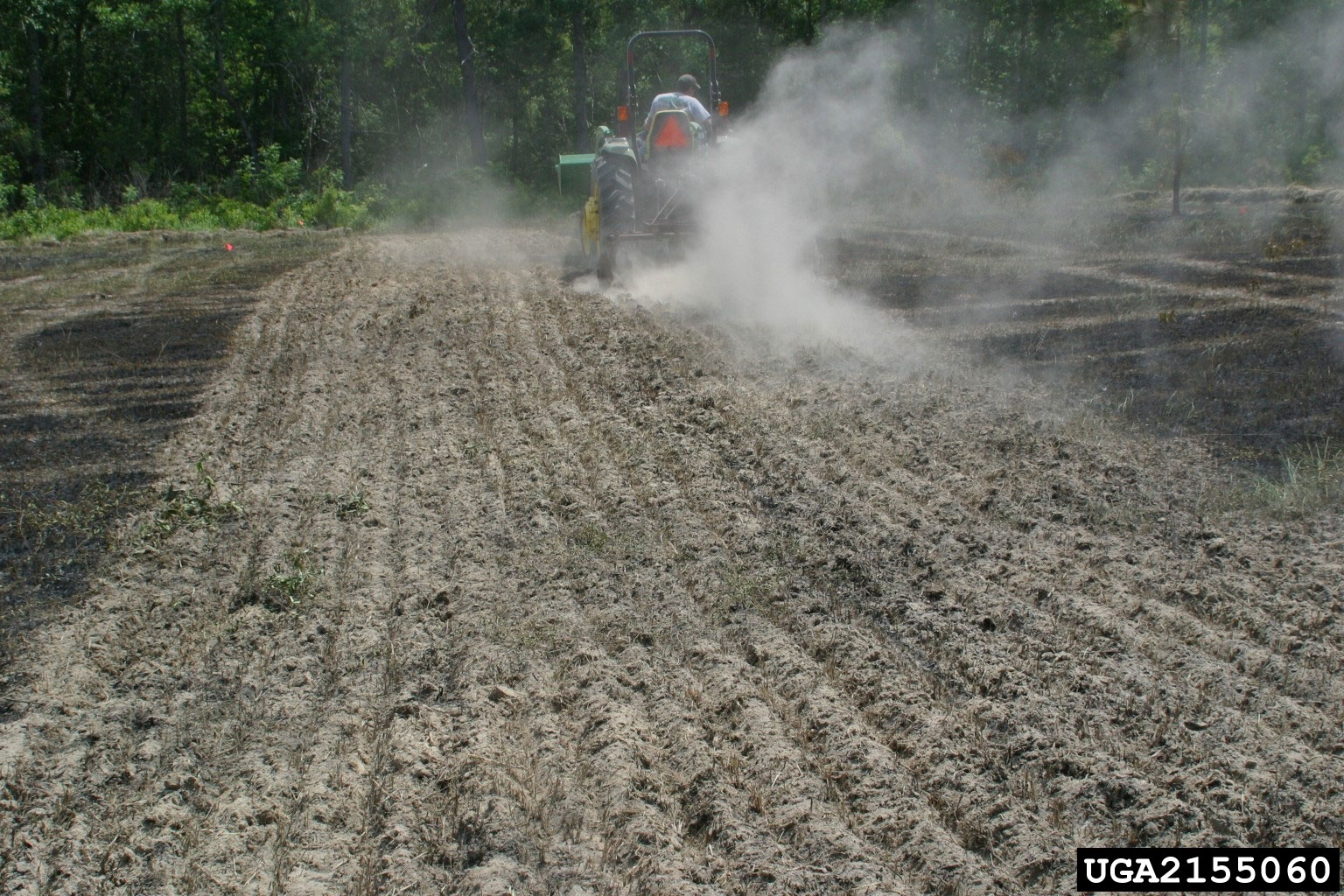
Cogongrass control by tilling. Photo by John D. Byrd, Mississippi State University (Bugwood.org, photo number 2155060, Creative Commons Attribution 3.0 United States license).
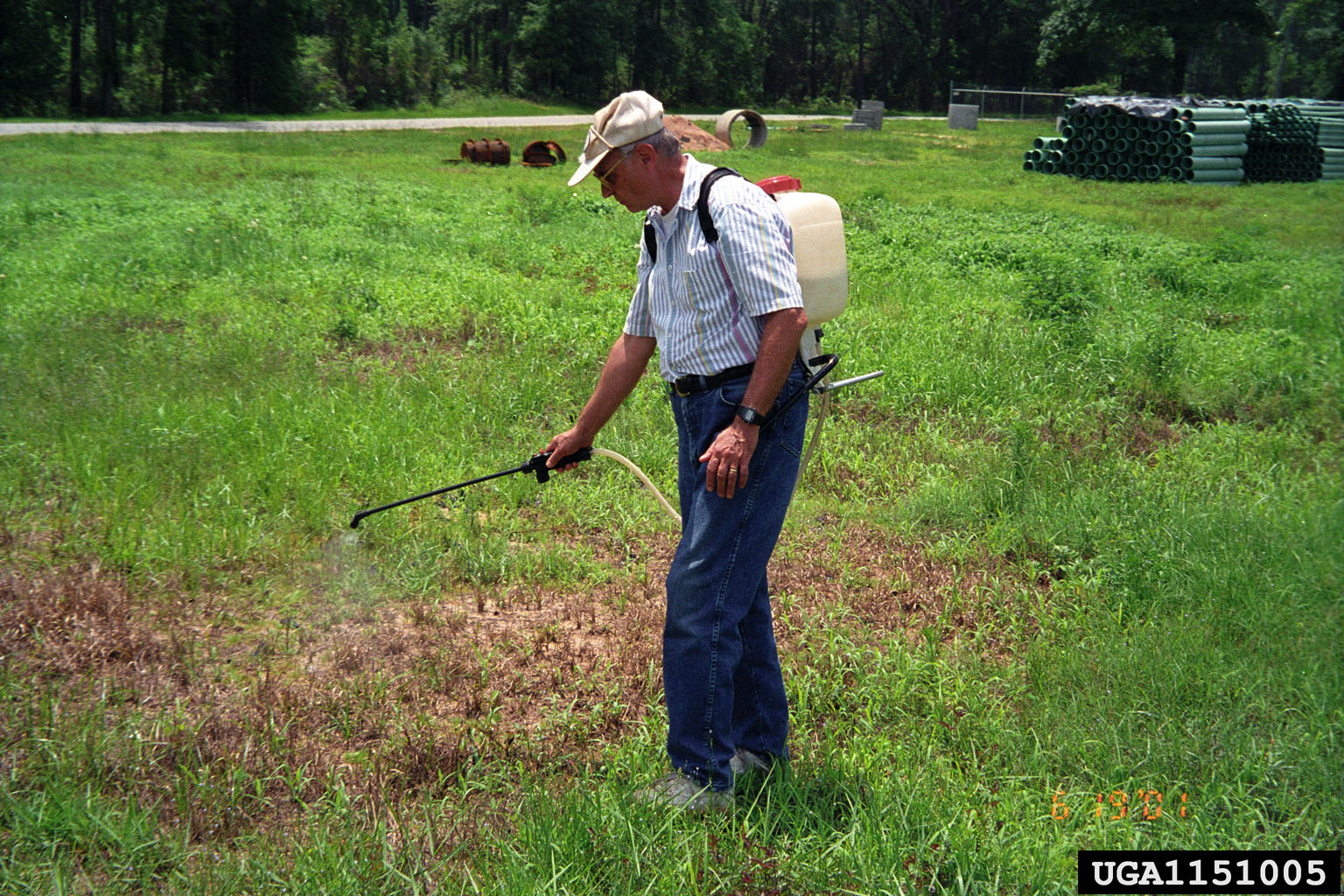
Cogongrass control with herbicides. Photo by Terry English, USDA APHIS PPQ (Bugwood.org photo UGA1151005, Creative Commons Attribution 3.0 United States license).
Resources
Websites
Cogon grass (Imperata cylindrica) (Viriginia Invasive Species): https://www.invasivespeciesva.org/species/cogon-grass
Cogongrass control recommendations (University of Georgia’s Center of Invasive Species and Ecosystem Health). https://www.cogongrass.org/control/
Imperata cylindrica (Bugwood Wiki): https://wiki.bugwood.org/Imperata_cylindrica
Imperata cylindrica (Center for Aquatic and Invasive Plants, UF/IFAS): https://plants.ifas.ufl.edu/plant-directory/imperata-cylindrica/
Imperata cylindrica (Plants of the World Online, Royal Botanic Gardens Kew): https://powo.science.kew.org/taxon/urn:lsid:ipni.org:names:30138371-2
Articles & reports
Articles
Hoyle, Z. 2014. Why is cogongrass so successful at invading the South? https://www.fs.usda.gov/features/why-cogongrass-so-successful-invading-south



